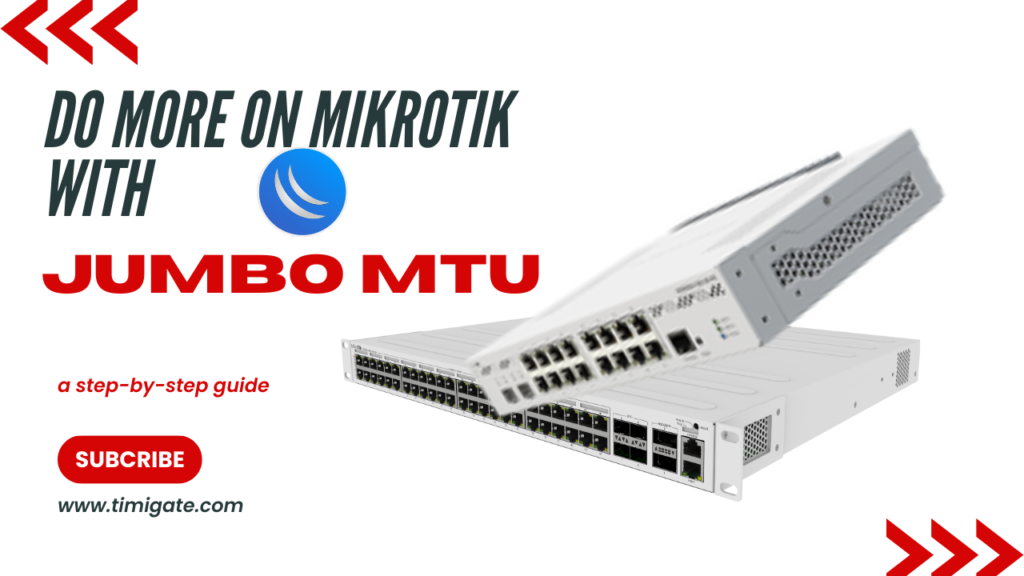Optimizing Metro Ethernet segments with jumbo MTU (Maximum Transmission Unit) can significantly enhance network performance by reducing overhead and increasing throughput. On a Mikrotik Metro-ethernet network, you can easily adjust your MTU size to allow for larger packet sizes, which can potentially increase network throughput and efficiency, particularly in environments where large amounts of data are being transferred.
Setting up Jumbo MTU (Maximum Transmission Unit) on MikroTik devices involves adjusting the MTU size beyond the standard 1500 bytes, which is the default for Ethernet. The following steps can be taken to optimize Metro Ethernet segments with jumbo MTU on MikroTik devices:

Understanding Jumbo Frames: Jumbo frames are Ethernet frames with a payload size greater than the standard 1500 bytes. They can range from 1501 bytes to 9000 bytes. Enabling jumbo frames allows for larger data packets to be transmitted, reducing the number of frames required to transmit a given amount of data, thereby decreasing overhead and improving efficiency.
You may also like: Implementing VXLAN over MPLS with Mikrotik
Check Device Compatibility: Before enabling jumbo frames, ensure that all devices within the Metro Ethernet segment support jumbo frames. Incompatibility can lead to fragmentation or dropped packets.
Configure Jumbo MTU on MikroTik Devices: Log in to your MikroTik router using Winbox or SSH. Navigate to “Interfaces” and select the interface connected to the Metro Ethernet segment. Set the MTU size to the desired jumbo frame size (usually 9000 bytes). You can do this by:
/interface ethernet set [interface-name] mtu=9000
Repeat this process for each interface connected to the Metro Ethernet segment.
Adjust Switch Configuration: If your MikroTik device is acting as a switch, ensure that the switch configuration supports jumbo frames. This may involve adjusting settings such as port MTU and enabling jumbo frame support.
Testing and Monitoring: After enabling jumbo frames, thoroughly test the network to ensure proper functionality and performance improvements. Monitor network performance metrics such as throughput, latency, and error rates to assess the impact of jumbo frames.
Considerations: Keep in mind that enabling jumbo frames may not always result in performance improvements, especially for smaller data transfers or networks with mixed device compatibility. Jumbo frames can increase latency for smaller packets due to buffering delays.
Ensure that all network components, including switches, routers, and network interface cards (NICs) on connected devices, are properly configured for jumbo frames.
Documentation and Backup: Document the changes made to the network configuration, including enabling jumbo frames, for future reference. Backup router configurations before making any significant changes to revert to a previous state if necessary.
Below is a video posted to my YouTube channel for your information.
If you find this video interesting, please feel free to like, share, comment, subscribe to my YouTube channel, and ring the notification bell to get notified when new videos drop. Also, like my Facebook page and follow me on Twitter.
